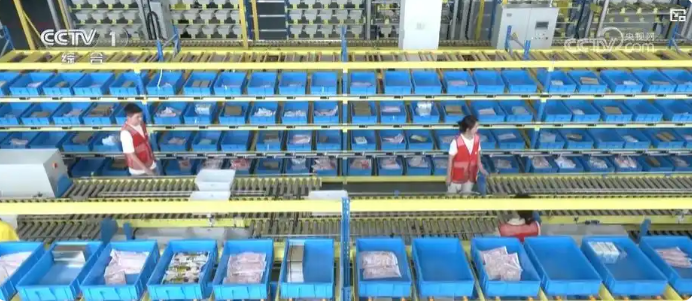
Last year, China’s express deliveries hit 174.5 billion, ranking first globally for 11 years in a row. While this growth is impressive, it brings serious environmental problems from packaging waste. To solve this, the State Council has ordered express companies to use greener, less wasteful, and reusable packaging starting June 1.
Many express companies are already taking action. SF Express has introduced “Double-E” recyclable bags made of 100% single material with 30% recycled plastic. They’ve replaced about 47 million traditional bags in Beijing. J&T Express uses fully degradable waterproof bags and biodegradable tape in many regions, with over 3.73 million bags and 344,000 rolls of tape used by the end of 2024. JD.com designed lighter “X-Series” boxes using 5-25% less material and saved 12,000 tons of carbon emissions in 2024. ZTO Express launched a recycling program, collecting 127 million cartons (纸盒) in 2024, cutting costs by 50% at some stores.
However, challenges remain. Fully degradable bags cost three times more than regular ones. Biodegradable materials like PLA are expensive and have a short shelf life. Reusable packaging is 3-5 times more expensive, with extra money for collection and transport. Also, many consumers worry about privacy (隐私) and cleanliness, refusing to return used packaging.
Experts suggest solutions. The government should set clear green packaging standards and offer financial support to companies. Companies must innovate cheaper, stronger green materials and build easy return systems. Most importantly, brands with high-value products should take the lead in using reusable packaging. To involve consumers, companies can offer rewards like points or discounts (折扣) for recycling. With these efforts, China’s express industry can grow while protecting the planet.
原创编写 版权所有 侵权必究! 每日更新 个性化阅读 英语飙升!
1.1. What problem does express delivery growth cause?
A Traffic jams.
B Packaging waste.
C High costs.
D Low efficiency.
解析:选B。B细节理解题。根据第一段的“it brings serious environmental problems from packaging waste”可知,去年中国的快递量达到1745亿件,连续第11年位居世界第一。这一惊人的数量引发了人们对包装废物对环境影响的日益关注。故选B。
2.2. Which company uses bags with 30% recycled plastic?
A J&T Express.
B JD Logistics.
C SF Express.
D ZTO Express.
解析:选C。C细节理解题。根据第二段中的“SF Express has introduced ‘Double-E’ recyclable bags... with 30% recycled plastic”可知,顺丰速运公司研发的“双易包装胶袋”100%单一材质,含30%再生塑料。故选C。
3.3. Which action is NOT mentioned in JD.com’s green efforts?
A Using lighter boxes.
B Reducing carbon emissions.
C Promoting original packaging.
D Using reusable ice packs.
解析:选D。D 细节理解题。京东物流的措施包括设计轻量化纸箱(A)、减少碳排放(B)、推广原发包装(C),未提及可重复使用的冰袋。故选D。
4.4. Why might consumers refuse to return packaging?
A It is too heavy.
B They dislike gifts.
C They worry about safety.
D New bags are expensive.
解析:选C。C 细节理解题。根据第三段中的“many consumers worry about privacy and cleanliness, refusing to return used packaging.”可知,消费者出于隐私泄露(隐私安全)担忧与卫生顾虑(卫生安全),导致多数用户不愿主动回收快递包装。故选C。
5.5. What do experts suggest for consumers?
A Recycling rewards.
B Free deliveries.
C Greener products.
D Privacy protection.
解析:选A。A细节理解题。最后一段提到“companies can offer rewards like points or discounts for recycling”,专家建议用奖励机制鼓励消费者参与回收。故选A。
